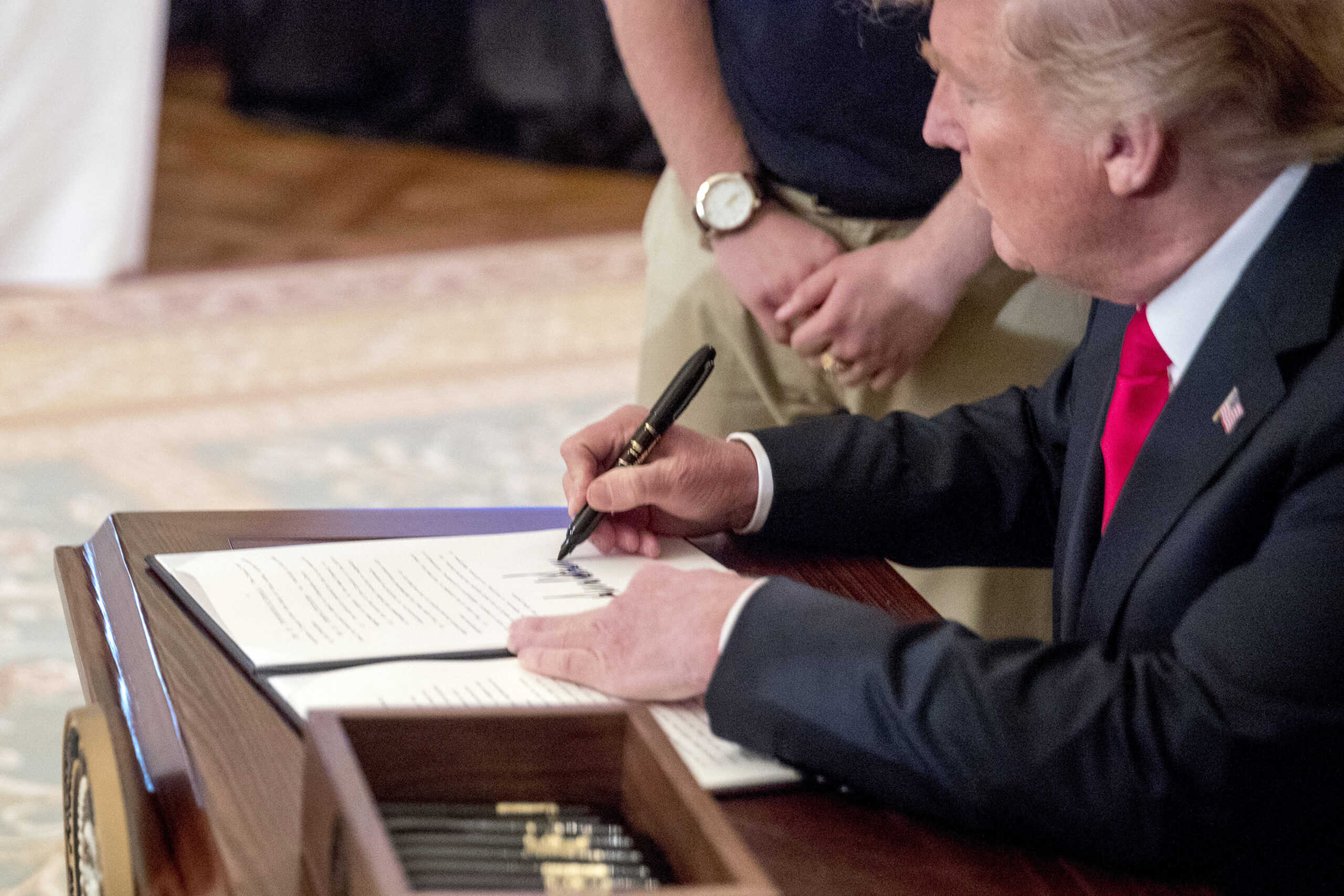
With a whole-of-government national security approach, Trump’s America-first policies have intensified competition with China. For good reason, headlines abound on the escalation of trade wars with China – a 10% levy is in effect on goods from China – as well as negotiations with Canada and Mexico, new tariffs announced on aluminum and steel.
Key Takeaways:
- China is leading on climate tech, notably solar, batteries, and EVs, this challenges U.S. hard and soft power as well as creates risks for U.S. companies dependent on these technologies for decarbonization
- With the world’s share of green jobs going to China, the U.S. economy and business leaders are missing out on the primary and secondary benefits of growth-drivers in the U.S. economy
- Companies operating in the U.S. and China will need to remain committed to their net-zero pathways to remain competitive, relevant, and compliant
U.S. has lost the economic advantages of climate tech leadership
In China clean energy investments rose 40% year-on-year to 6.4 trillion yuan ($890 billion) with the growth accounting for all the investment growth across the Chinese economy. To put in comparative terms, China’s $890 billion in clean-energy sectors is almost as large as total global investments in fossil fuel supply in 2023 and similar to the GDP of Switzerland or Turkey.
All in all, without the growth from clean-energy sectors, China’s GDP would have missed the government’s growth target of “around 5%,” and would be closer to 3.0%. With its real estate market in crisis and shrinking, clean energy is quickly becoming a pillar for China’s energy, economic, and industrial policies.
As a result of these massive investments, China also leads the way in growth of “green jobs” as evaluated by a recent study from the International Renewable Agency (IRENA) and the International Labour Organization. With an estimated total of more than 7 million green jobs, it has gained a 46% share of the global total. The biggest share of China’s green jobs is in the solar power sector, which employs nearly 4.6 million Chinese people.

Compare those figures to the U.S., which created rough 1 million green jobs in 2023. It is now in a position where it imports about three times more renewable energy products and services than it exports, according to IRENA. Most of its green jobs come from its emphasis on biofuels, onshore wind, and solar PV.
The profits China is making selling climate technologies extends to its sphere of influence in Southeast Asian, African, and Latin American markets. China’s diplomatic strategic infuses its business, economic, and political interests. In addition to being moneymakers, climate investments and technology sales help China build diplomatic ties and secure access to critical minerals.
While the IRA has incentives in place to support the renewable energy transition in the U.S., it was too late on certain renewable technologies to lead. The U.S. could have taken a similar approach to being the provider-of-choice for renewable energy technology, not only for the U.S., but for the Global South as well. As a result, China is gaining and securing access to minerals and resources critical to the longevity of U.S. and European businesses. With the trade war booming, it is unclear how this will pan out.
China’s renewable energy revolution
In the past few decades China has achieved remarkable growth in its installed renewable capacity and has far outpaced the rest of the world.
The Chinese government’s ambitious 2060 carbon-neutralization targets have spurred industries to innovate and commit. For instance, CATL, a leader in the EV battery market with a 37% global share in 2022, achieved a 25% reduction in greenhouse gas emissions intensity within a year and initiated a recycling program with over 99.3% recovery of materials from spent batteries. CATL’s Sustainability efforts extend to its supply chain, with audits ensuring ESG principles are helpful.
China’s EV growth has been similarly extraordinary. More than half of new cars sold are electric, putting the world’s largest auto market on a path to all but erase gas-powered cars over the coming decades. Last year China’s EV sales soared to 11 million, a nearly 40% increase on 2023. This EV revolution has consecrated China’s claim on global climate leadership. The effect is also shaking oil markets. Analysts predict oil demand may be peaking in China, which flipped from increasing demand to declining. Since China is the world’s largest oil importer, its moves sway the entire market.
Unlike the U.S., China boasts a robust charging infrastructure. Its homegrown EV expertise is world-leading. It’s the first country in the world to figure out how to produce large amounts of cheap EVs that people actually want to buy.
The U.S. is failing to compete, means higher prices for U.S. businesses and customers
China’s steady, long-term investments in climate solutions will make it harder for the U.S. to compete in these industries. Liu Shuo, director of the China climate hub at the Asia Society underscores this challenge, “The U.S. does not want to get into a table tennis game with China, because that game the U.S. cannot win.”
Finally, with further trade restrictions a potential, China may look to limit the U.S.’s ability to import renewable energy technology, which would dramatically increase the cost of doing so for U.S. businesses.
Clearly, this is a fast-moving target with more questions than answers, yet there are bountiful long-term implications of the moves the Trump administration makes.
Actions boards can take:
- Green transition roadmap. Understand which areas of your operations and supply chain interface with carbon-intensive energy assets, and workforce to understand the full implications of the green transition and create a long-term roadmap of the evolution of U.S. infrastructure and its impact to your business
- Impact of trade wars on decarbonization. Assess and monitor political risk with China to your enterprise and global operations – be it from a trade or tariff perspective or your company’s strategy to decarbonize
- Increased prices of renewable tech. Conduct sensitivity analysis to determine impacts of price increases due to trade wars with China – especially restrictions or levies on solar, energy storage, and others
- Inflationary pressures. With consumer prices increasing in January, inflationary pressures loom. Identify areas of cost and margin compression due to new data from January
- Climate tech investment potential. Identify opportunities to make investment in renewable energy technology, whether in a joint venture, climate or green bond, through Power Purchasing Agreements (PPAs) or Renewable Energy Credits (RECs) as part of the company’s decarbonization strategy
- Stay the course. Emission reduction requirements are here whether or not they are favored by the current presidential administration, keep making progress towards decarbonization goals and push for cost efficiencies
Questions for the boardroom:
- How can the board leverage its government affairs teams to assess the implications of China’s leadership role on renewable tech and the risks it poses to its business?
- How will trade wars impact the cost of renewable tech in the U.S. and for our company’s decarbonization strategy?
- How can we encourage green job creation in local communities which would create network benefits for our business, supply chain partners, clients?
- What is the future of the workforce in the U.S. and at what pace will it green? What does this imply for the future of the industrial sector? Our business model?
- What are our company’s principal climate transition risks as the global economy shifts toward renewable energy sources? How are we mitigating those risks?
Additional Telesto resources:
- Board Series: How will Apple win amidst the turbulence of China tariffs and export restrictions in Trump 2.0?
- Board Series: A snapshot of Trump 2.0 policy priorities
- Board Series: Preparing for China’s retaliation to Trump 2.0 tariffs
- Board Series: The Amazon dilemna – will Bezos do better in Trump 2.0?
- Atlas, equips your organization’s corporate directors and leaders with the insights and knowledge necessary to stay up to date, mitigate risks, and seize business opportunities associated with sustainability, climate, and ESG.
- Prism, our ESG benchmarking tool, helps your organization to rapidly strengthen its sustainability, climate, and ESG performance and disclosures through in-depth benchmarking of industry peers and identification of gaps and areas of distinction




